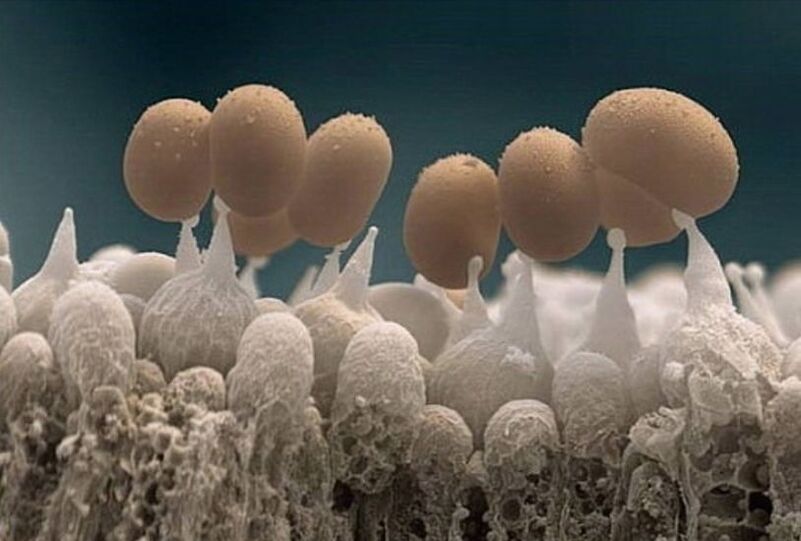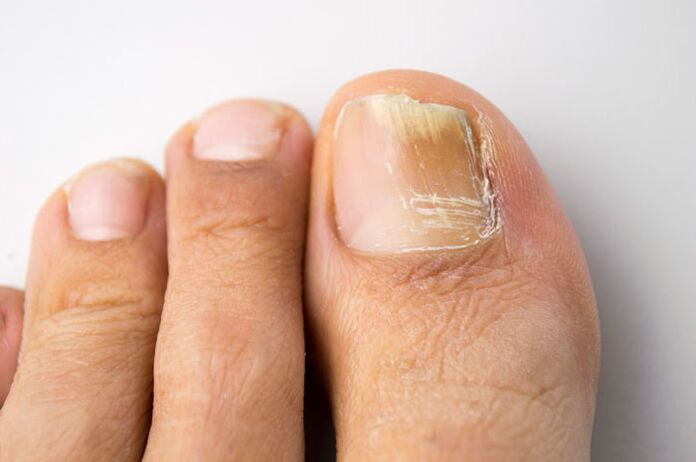With a fungal infection on the nail plate, or onychomycosis, you should contact a dermatologist or mycologist. The first doctor specializes in any skin problem. In its efficiency are allergic, bacterial, viral and fungal lesions on the epidermis. Mycologists are narrowly qualified specialists. He understands all types of fungi, treats mycotic lesions of any localization, conducts research work and collects statistical information.
When you need medical help
A person becomes infected with a fungus when its spores touch the skin or nail plate. You can "catch" pathogenic microorganisms in public places (saunas, swimming pools, beauty salons), from your own family members, in shoe stores. Fungi are very fond of humid and warm environments. They are able to reproduce in shoes. Often this happens if a person suffers from sweaty feet, ignores this fact or ignores the rules of personal hygiene.

When in contact with a fungus, a person is not always infected. This is preceded by a decrease in immunity. Typically, the body successfully copes with the onslaught of billions of microbes every day. If the defense runs out, you can expect trouble.
Onychomycosis is a serious infectious disease. Thus, a person is in contact with pathogenic fungi for a long time. Mycotoxins with toxic properties enter his body. It also has a negative effect on the immune system. Get rid of nail fungus as soon as possible. The longer a person co -exists with the infection, the more difficult and longer it is to be treated. Launched onychomycosis is difficult to cure, becomes chronic, recurrent, requires the use of lifelong prophylactic agents.
It is necessary to contact a doctor when the first signs of nail mycosis occur, namely:
- if they are covered with small spots, dots, streaks, pale inclusions;
- if the color of the nail plate has changed - it has become yellow, brown, gray or greenish;
- if the plate grows, improper nail cutting creates a "gateway" for infection;
- if the nails peel off - a sign of progression of onychomycosis;
- if a person suffers from ringworm - the fungus easily spreads to the nails from the skin;
- if among family members there are people with onychomycosis;
- if the nail has lost its luster, it becomes dull, heterogeneous.

The direct reason for visiting a doctor is itching, sweating, dry skin on the feet. Excessive sweating and unpleasant foot odor can speak of a growing fungus.
Who goes first
Having decided to see a doctor, you need to make an appointment with a dermatologist first. There are dermatologists in all paid and free hospitals. You can freely get an appointment with a dermatologist at the skin care center at the residence.
The dermatologist will conduct a visual examination - identify signs of fungal development, examine the skin for other symptoms of mycotic lesions of the body. As a rule, the doctor prescribes a test (scraping from the nails or skin) that confirms or denies the fungal disease.
If the expert’s suspicions are confirmed, additional tests may be prescribed - general and biochemical studies of blood, urine, and liver tests. Additional information is needed to identify the cause of the infection, to detect all possible comorbidities. Blood and liver diseases impose restrictions on the use of certain medications.
Referral for consultation with a mycologist is issued in advanced cases - if all toenails are damaged by onychomycosis, the process of onycholysis (destruction of plates) has begun, some nails are already missing, the patient previously did not succeed on his own. medicated. A narrow -profile specialist will prescribe additional tests to identify the type of pathogen. Specific medications will be more effective for certain types of fungi.
General principles for the elimination of onychomycosis
For the treatment of nail mycosis, specialists prescribe several medications at once. Among them:
- systemic antifungal agents;
- the dosage form acts locally;
- vitamin supplies;
- immunostimulant.
Physicians individually assess the patient’s lifestyle and hygiene culture. If necessary, he gives the appropriate recommendations needed to reduce the duration of therapy.
Medical treatment should be carried out very carefully. The patient must take the medication orally in a timely manner, strictly adhering to the terms of treatment recommended by the doctor. Local remedies are used until the problem is completely eliminated. As a rule, use is continued for 1-2 months after the symptoms of onychomycosis disappear. The following are defined as topical preparations:
- varnish;
- gel;
- ointment;
- solution.

As an additional method, a salt water bath is recommended, removal of the plate with the help of a special softening ointment, surgical assistance is sometimes required.
Immunostimulants and vitamins were selected according to the results of biochemical analysis. In some cases, nail fungus is the first sign of a serious disease of the internal organs or hematopoietic system.
Do not discard the doctor's phone number immediately after the first consultation. The success of onychomycosis therapy depends on the control of the healing process. Physician consultations and tests will be repeated several times during the therapeutic course (up to 1 year). They should be taken again after the regrowth of the altered nail plate, a month after complete recovery. In order not to complicate the treatment process, the patient should reject the decorative varnish, nail extensions.

























